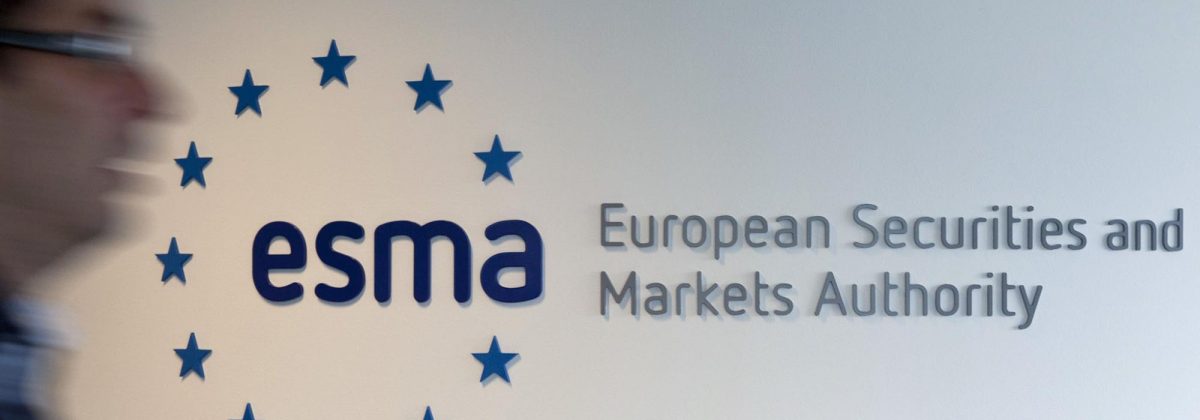The European Securities and Markets Authority (ESMA) is the financial regulator of the EU region, acting as one of the three new European Supervisory Authorities, established within the European System of Financial Supervisors. Among its many functions in regulating the financial markets in the region, investor protection remains a top priority.
The financial services market has a significant impact on the day to day life of investors. For any domestic economy to grow and sustain itself, it is vital that its citizens or investors make informed investment decisions and stay confident regarding their investment protections. Peace of mind that their earnings will stay protected is vital.
ESMA ensures investor protection through its various guidelines and policies implemented in the field of banking, insurance, trading, occupational pensions and more.
Role of ESMA in Investor Protection
For investor protection, ESMA looks into the behaviour of financial firms that sell or advise consumers regarding investments in various instruments. It ensures that:
- Customers are treated by firms in a fair manner and investor interests are kept at the centre of business models and corporate structures.
- Investors are always provided with updated, clear and relevant information.
- Investors are recommended products and services that match their profit goals.
From January 3, 2018, a new legislative framework, MiFID II/MiFIR was introduced, to strengthen investor protection and improve the functioning of the financial markets. The new rules have been put in place to increase transparency for all participants, ensure fair practices and create new reporting requirements and tests for financial firms to enhance the amount of information available, while reducing the usage of dark pools in trading.
Enhancing Organisational Requirements
MiFID II has established clear guidelines for different financial service providers, regarding how products need to be created and reviewed, as well as how they should be marketed and sold.
Firms now need to maintain complete transparency regarding the context in which financial advice is being offered. They need to be clear about the risks associated with any investment vehicle or strategy adopted. This transparency has to be ensured, both in terms of the level of analysis offered and the way it needs to be paid for. Moreover, all marketing communications need to be uniform across all platforms, whether print media, social media or emails. Distributers have obligatory reporting requirements on the markets being targeted and how potential conflicts of interests will be dealt with.
In addition, MiFID II also stresses on the structural requirements of financial firms. The guidelines are aimed at enhancing the quality of top management, while introducing mandatory organisational requirements for aspects like customer complaints, risk monitoring, safekeeping of client assets, record keeping and avoiding conflicts of interests.
For instance, an ESMA licensed forex broker has to be able to fulfill certain conditions, in order to be able to offer leveraged financial products and stay accredited. Some of these conditions include:
- The broker has to keep client funds segregated from company funds, in separate bank accounts, maintained with a reputed banking institution.
- Broker companies have to provide monthly account statements and trade position statements to clients.
- Companies have to get their financial statements audited by external supervisors and auditors periodically.
- Brokers have to issue standardised risk warnings, including the percentage of losses a retail client might suffer while trading leveraged derivatives like CFDs. This has to remain constant across all marketing materials.
- Companies have to provide negative balance protection for clients. A firm will have to enhance its capital requirements in order to do so.
- Percentage of margin has been set at 50%, beyond which all brokers are required to close all positions in CFDs and forex.
To ensure that firms have the necessary funds to compensate clients in case of bankruptcy, the new MiFID II guidelines have revised minimal capital requirements for firms to obtain brokerage licenses.
Promoting Responsible Leverage
Prior to the introduction of the new MiFID rules in 2018, the levels of leverage offered by some trading firms were found excessively disproportionate to the risk tolerance limit of an average investor. A huge section of the margin trading industry was simply concentrating on building profit reserves, rather than serving client interests.
CFDs and FX instruments allow traders to trade across the full global macro cycle and diversify their portfolios. However, for investors with small account capitals, increased leverage, beyond 100:1, enhances the risk of clients losing their money, resulting in earlier stop-outs. Hence, MiFID II introduced lower leverage limits of 30:1 for major currency pairs and CFDs. For non-major currency pairs and equity indices, the limit has been set to 20:1, while for cryptocurrency instruments, the revised limit is 2:1.
Such regulations have ensured that firms do not just compete on leverage, through mis-selling of products, and do not lure investors through false promises of profit.
ESMA Updates MiFID Q&A on Topics Related to Investor Protection
ESMA performs its functions through a number of channels, including the updating of information on its website. On May 29, 2019, ESMA published an updated version of Q&As on topics related to investor protection under MiFID and MiFIR.
Several new questions have been included, on reporting requirements of market makers, terminologies to be used in disclosure statements and more. The updated Q&A section includes, among other things:
- Five additional questions on best execution
- Four new questions regarding information on costs and charges
- Two additional questions related to investment funds.
Reference Links





